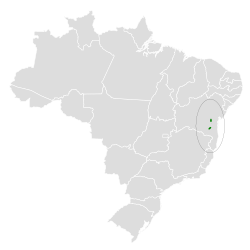| Slender antbird | |
|---|---|
 | |
| Scientific classification | |
| Kingdom: | Animalia |
| Phylum: | Chordata |
| Class: | Aves |
| Order: | Passeriformes |
| Family: | Thamnophilidae |
| Genus: | Rhopornis Richmond, 1902 |
| Species: | R. ardesiacus |
| Binomial name | |
| Rhopornis ardesiacus (Wied, 1831) | |
 | |
The slender antbird (Rhopornis ardesiacus) is an Endangered species of bird in subfamily Thamnophilinae of family Thamnophilidae, the "typical antbirds". It is endemic to Brazil. [1] [2]


